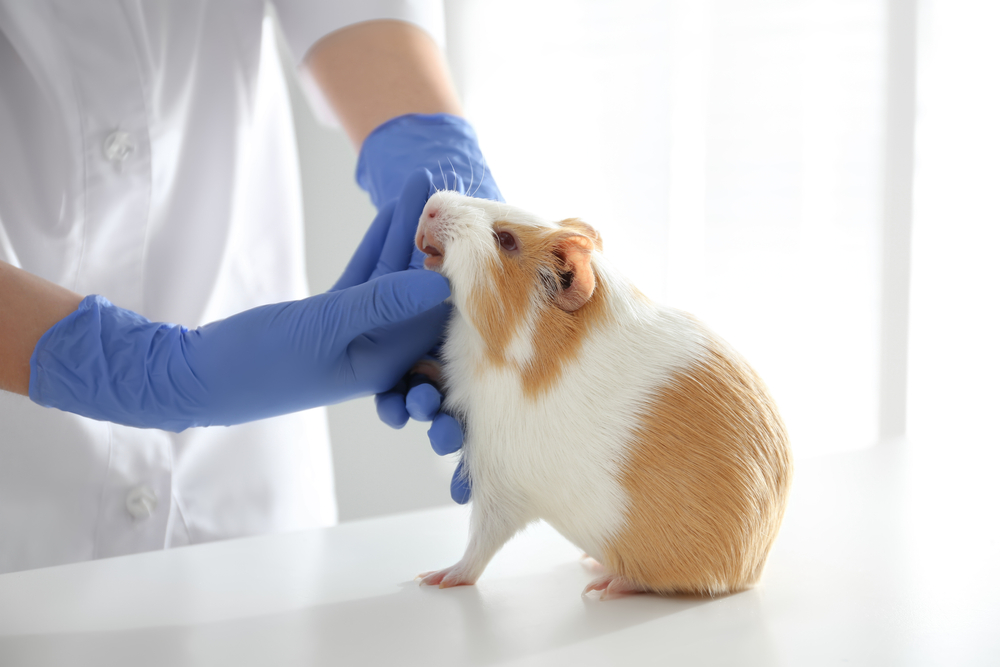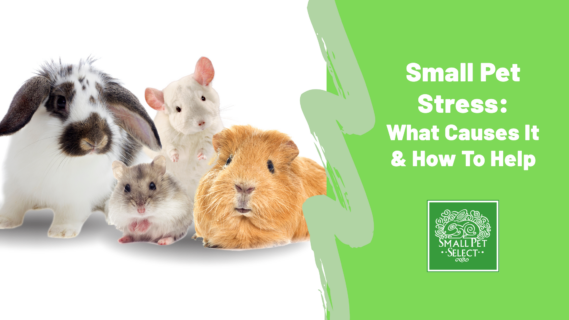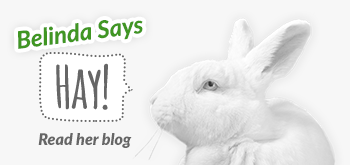Just like us, our pets can experience stress. As their caretakers (and friends!), it’s our job to try to make their lives as stress-free as possible! Read on to find out how you can recognize small pet stress and how to help.
Causes of stress
For small pets, there are lots of potential causes of stress! Some of the top ones are
- Environmental issues – such as too small of an enclosure, stale food or water, dirty bedding, loud or sudden noises
- Social group issues – such as no friend of the same species, overcrowding, incompatibility of cage-mates
- And boredom – such as loneliness, minimal enrichment, little time spent with you, no out-of-enclosure time.
And since critters are considered “prey” species, they have additional sources of stress that other pets may not have, for example
- If they don’t have places to hide in when they feel threatened
- If predator species such as dogs and cats get too close to them (even the smell of other pets can be stressful)
- If they are handled too much or incorrectly, especially if they’re not used to much handling.
Why stress can be bad
Besides the emotional impact of stress (our pets can feel stress just as strongly as we ourselves can!), stress can be significant in terms of health. Too much stress can cause digestive issues, decreased activity, weight gain, and increased risk of disease due to lower immune system function.
Signs of stress
The most common signs of stress are similar in most species of small pets. These include things such as biting (either at the enclosure or you), baring of teeth, overgrooming, circling or pacing, freezing, and hiding. Individual species have their own signs of stress. Some of the most common include the following:
Rabbits
Thumping of feet
Heavy breathing
Flattened ears
Running away
Restlessness or inactivity
Guinea pigs
Frequent yawning
Frequent head tossing
Sleeping more than usual
Not wanting to be handled
Rats
Squealing or crying
Avoiding you
Trying to escape
Increased aggressiveness
Showing fear of something new
Chinchillas
Drinking more water than usual
Barking and whistling
Backflipping in the enclosure (this is normal behavior when having time outside the enclosure)
Chewing fur
Some behaviors that small pets exhibit can be stress-related but can also be signs of a medical issue. If your pet exhibits several of these signs that you can’t explain due to temporary stress, you should probably take your pet to your veterinarian:
Changing in eating habits, including weight loss
Bald patches
Consistently bulging eyes or squinting eyes
Sitting hunched or tail tucking
Fast breathing
Discharge from the nose or eyes
Lethargy or change in alertness
Difficulty walking

Minimizing stress
When deciding to welcome a small pet into your family, learn how to best make its transition into your home as stress-free as possible and how to ensure that it has its best life with you.
Provide the proper environment for your type of pet. Different small pets have different needs, including size of enclosure; location of the enclosure; lighting, ventilation, temperature, and noise requirements; bedding; and areas for hiding.
When cleaning your pet’s enclosure, minimize noise, move slowly, and be mindful if they are hiding or taking a snooze. Be sure to clean the enclosure at regular intervals and with pet-safe cleaners. Oftentimes scents of cleaners or the smell of a dirty cage can be very stressful.
Interact with your pet how it wants to be interacted with. Some species, and even some individuals within a species, enjoy and need more or less interaction with humans than others.
Handle your pet carefully. For example, while it is getting used to being picked up, always pick it up over a table instead of high up in the air. Be careful not to hold too tightly and never hold it up by the tail or ears.
Plan for possible stress. Place its enclosure in a quiet area, provide several tunnels and boxes to hide in, follow a consistent routine for feeding and other daily care, make sure your pet always has hay to munch on and burrow in, and don’t introduce too many new things into its enclosure at once.
Enrichment is so important! Offer lots of types! Cardboard in various forms (such as toilet paper rolls), sheets of packing paper, untreated wooden blocks, toys made from bamboo or other grasses, ledges to climb up on and look out from, hard plastic baby toys, and so many more items help eliminate the boredom that causes stress. And don’t forget supervised time outside of the cage/pen to explore.
What to do if you spot signs of stress
- Change up your pet’s living space. Slowly introduce new forms of enrichment, enlarge the space if possible, make an additional level to it, give a new nesting area to hang out in, offer a new healthy treat, and allow more out-of-enclosure time for example.
- Spend more time with your pet. Even if it’s just doing homework or watching television next to your pet, let your pet know you are there with it.
- Make sure that you are handling your pet gently and correctly. If it doesn’t like to be picked up, interact with it differently, such as lying on the floor with it or allowing it to come into your lap instead.
- Keep other “predator” pets such as dogs and cats away from your small pet. Also keep your small pet’s area away from things such as a cat’s litter box that can be stressful if your small pet smells it.
- Consider getting your pet a friend. Many small pets naturally form groups, so when not part of a group they can feel loneliness and depression. If you do this, introduce them slowly and carefully and get help if necessary, since the “bonding” process can take a while, and not every small pet will get along with another small pet, even of its own species.
- Take your pet to your veterinarian if necessary, especially if you notice changes in eating, lethargy, breathing issues, or evidence of a wound.

Copyright 2025 Amy “Brem” Bremers, DVM





